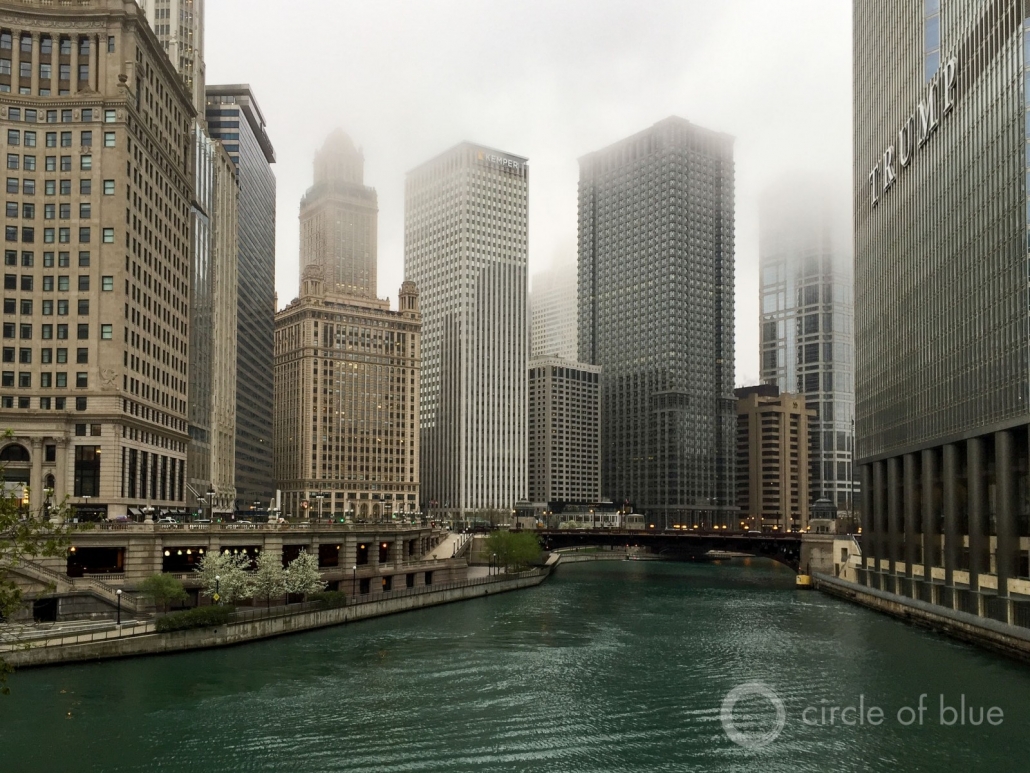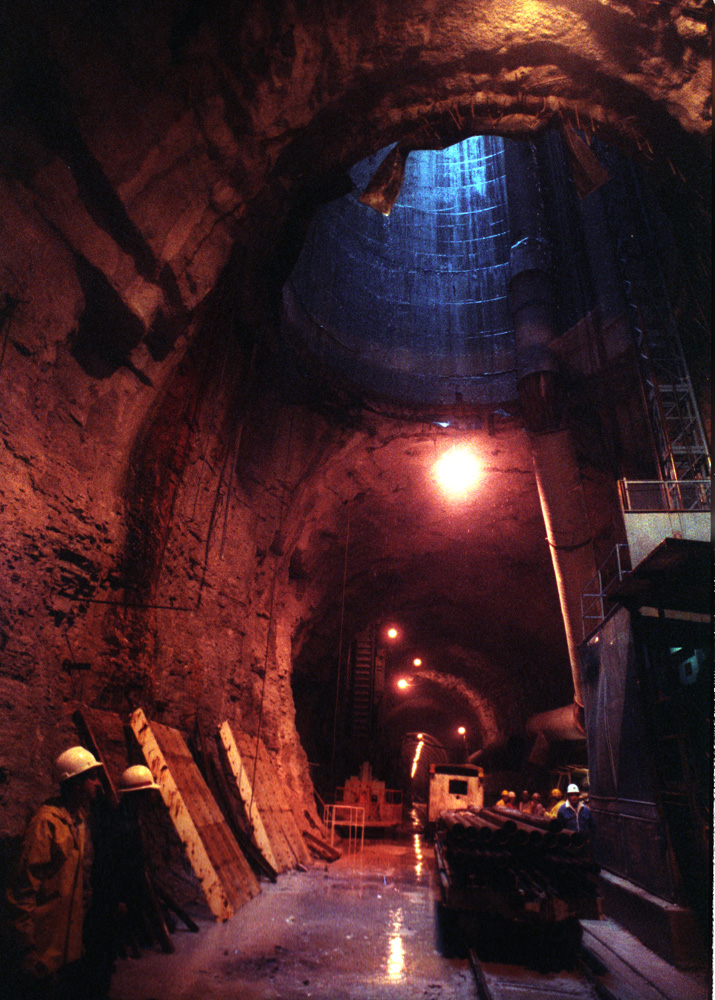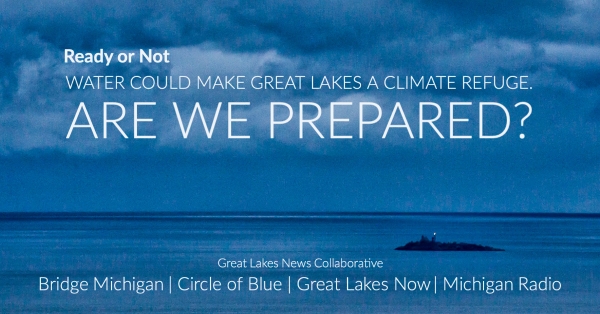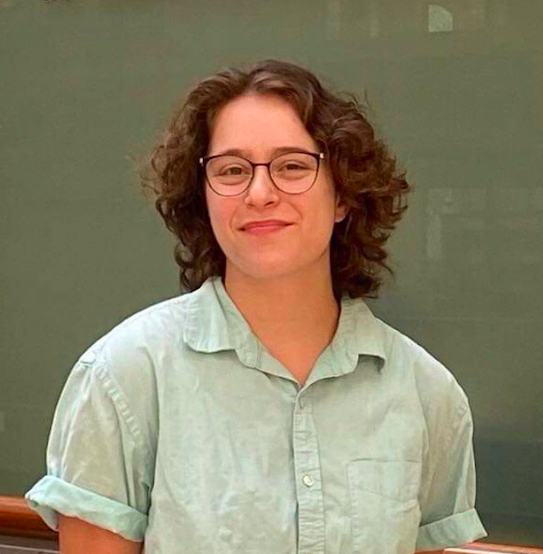
Just one or two inches of rain can overwhelm Chicago’s water infrastructure. If there’s too much strain on the system, the city pours its contaminated runoff into local rivers and Lake Michigan, which is also Chicago’s main source of drinking water. Photo © J. Carl Ganter / Circle of Blue
Chicago’s leaders have poured billions into ambitious programs to keep water away from roads and buildings. But urban flooding continues—overwhelmingly in communities of color—forcing experts to turn to new solutions.
- Almost five decades after Chicago embarked on one of the region’s most ambitious and expensive infrastructure projects to date, urban flooding continues to plague residents–particularly in communities of color.
- Local drainage systems in Chicago are deeply intertwined with private sector development. Therefore, efforts to address disparities in urban flooding run into a key obstacle: there isn’t much of a market incentive to develop solutions in the areas of greatest need.
- Experts believe the next task in stormwater management is utilizing a “smart” city approach in order to use existing infrastructure more effectively.
By Laura Gersony, Circle of Blue – June 29, 2021
In the early 1970s, Chicago embarked on one of the region’s most ambitious and expensive infrastructure projects to date: the Tunnel and Reservoir Project or “Deep Tunnel,” a massive storage system that will be able to hold more than 20 billion gallons of water when it’s finished in 2029.
The project was conceived as a solution to a perennial problem in the city. Chicago has a combined sewer system that carries both toilet flushes and street runoff in the same pipes. Just one or two inches of rainfall can overwhelm this network, forcing sewage back through the pipes to where it came. When this happens, sewage flows into city streets or residents’ basements in what’s known as urban flooding. If there is still too much strain on the system, the city opens its floodgates, pouring the mix of sewage and street runoff into local rivers and Lake Michigan, which is also the city’s main drinking water source.
Forty-eight years, nine mayors, and more than $4 billion after the Deep Tunnel was commissioned, urban flooding continues to plague residents–particularly in Chicago’s communities of color—and some experts say it is time for a fresh approach.
Disparities in Urban Flooding
City activists like to say that “there’s only one map of Chicago.” By this they mean that the racial and ethnic distribution in the city maps neatly onto distributions of life expectancy, median income, Covid-19 vaccine access, and other indicators of wealth and poverty. In almost all cases, communities of color come out behind. While the effects of urban flooding can be hyperlocal — heavy rains can flood one building while leaving a neighboring one unharmed — the broad pattern of Chicago flooding reflects this “one map” all too closely. Low-income neighborhoods and communities of color, once again, are predominantly in the hazard’s path.
Researchers at the Center for Neighborhood Technology, a think tank that works on urban sustainability issues, analyzed flooding data across Chicago neighborhoods. They found an important statistical relationship. As the percentage of households of color increased, the number of flood insurance claims increased exponentially.
“Just thirteen Zip codes represent nearly three-fourths of flood damage claims paid in Chicago between 2007 and 2016. In these areas, 93 percent of residents are people of color,” the report states, noting that over a quarter of households in these Zip codes live below the poverty line. According to CNT’s analysis, these communities also received, on average, the least financial assistance per flood claim.
In other words, the areas that flood the most receive the least help and are the least able to pay for flood repairs. This lack of financial aid is one of the many disadvantages, including lost working hours, property damage, and health issues, that flood damage often inflicts on the poorest households.

Chicago has poured $4 billion into its “Deep Tunnel” project, a network of tunnels and reservoirs that will eventually be able to hold upwards of 20 billion gallons of water. Some argue that the city should have invested in green infrastructure projects, which seek to absorb water where it falls, instead. Photo © J. Carl Ganter / Circle of Blue
Incentivizing Development
Because of city policy, local drainage systems in Chicago are deeply intertwined with private sector development. Chicago‘s Stormwater Management Ordinance, or SMO, governs new development and redevelopment in the city and regulates how rainfall is captured, stored, or released at each site. Though designed to reduce flood risk, the policy has had an unintended consequence: widening disparities in water infrastructure investment between poor and wealthy neighborhoods.
Ryan Wilson from the Metropolitan Planning Council (MPC), a Chicago-area urban planning organization, said that many city blocks or neighborhoods where new stormwater infrastructure could deliver the greatest benefit remain at risk of flooding because there has been limited or no new developments big enough to require a stormwater permit.
“Development is not reaching some of the communities, especially in pockets of west and south neighborhoods, which have reported significant basement backup and local flooding.” These neighborhoods are among the city’s poorest. As a result, efforts to address disparities in urban flooding run into a key obstacle: there isn’t much of a market incentive to develop solutions in the areas of greatest need.
Wilson said that requiring developers to control rainfall on their sites was “an essential step” for addressing flooded basements. But he said it’s only a first step. The next move is to encourage developers to build water-absorbing systems where few now exist.
In partnership with The Nature Conservancy, Wilson’s group wants to encourage more private investment by offering carrots. They call it “StormStore,” a system that gives landowners credits for building stormwater retention not required by a development permit. Developers can then buy these credits rather than build stormwater infrastructure on their own property, saving themselves money that can be invested in their own development. The project’s founders hope StormStore will incentivize stormwater management in areas where it’s been ignored in the past.
“We think that, if implemented, what this will allow the city to do is prioritize stormwater management where it can have the greatest impact,” Wilson said. While the pandemic interfered with StormStore’s pilot program in Chicago, the two conservation groups spearheaded a similar program in the nation’s capital. Washington, D.C.’s Department of Energy and the Environment now boasts a robust credit program of this kind, which MPC claims has seen significant green infrastructure investment in low-income areas.
Still, there are limits to a third-party credit system in Chicago. According to MPC’s calculations, only about one in five new developments would benefit from this approach.
“It will move the dial, but without broader public-private coordination and policy change it’s not going to move the dial fast or far enough to address our climate crisis; it’s not going to move the dial the way a comprehensive, multi-agency plan to eliminate urban flooding might; it’s not going to move the dial in the way that dramatically increasing public investment in infrastructure would,” Wilson said.
Stormwater retention projects have received a steady trickle of public funding in recent years. In 2014, Rahm Emanuel, Chicago’s mayor from 2011 to 2019, set $50 million aside for green stormwater projects, and Lori Lightfoot, the current mayor, has pledged to transform one alleyway in each ward of Chicago into an absorbent “green alley” every year. Still, the vast majority of funding has been poured into one mammoth project that seeks to divert, rather than absorb, stormwater: the Deep Tunnel.
A Feat of Engineering or “Missed Opportunity”?
The Tunnel, the Chicago metro area’s $4 billion project to address urban flooding, has been in the works since 1972. When completed in 2029, it will consist of 109 miles of underground tunnels and three reservoirs that will be filled with stormwater and sewage during heavy rain. The reservoirs will hold the noxious mix until sewage treatment plants have enough capacity. The tunnels are finished, but the reservoirs are still in progress.
As city leaders have acknowledged, the Deep Tunnel is no silver bullet for localized flooding. There’s a growing consensus that urban flooding is largely not a capacity problem—which views the sheer volume of water as the cause of flooding—but is instead an inflow restriction problem, meaning that water can’t enter the necessary channels quickly enough. One engineer has compared the Deep Tunnel system to a bathtub: “if you don’t have big enough straws to get to the bathtub, it doesn’t matter how big your bathtub is.”
In many neighborhoods of Chicago, water can’t drain into the bathtub fast enough. In this way, while the capacity of the Deep Tunnel system can prove useful during larger storms, it is not a solution to localized flooding. “The intent of the project was different than the challenge that we’re dealing with today,” said Gregory Wolterstorff from the civil engineering firm V3 Companies.
The Deep Tunnel is, in some ways, a relic of a prior paradigm of wastewater management.
Before settlement by Europeans, the Chicago region was a marshy wetland blanketed with moisture-loving plants. Now, the natural areas that once soaked up water during heavy rains are covered in impermeable concrete, which runs off into the sewers. Instead of bottling up this runoff in pipes, more and more cities are turning to “green infrastructure”—which restores the landscape’s natural ability to absorb stormwater—alongside traditional “grey” infrastructure projects which divert stormwater into sewers.
CNT has long viewed the Deep Tunnel as a missed opportunity. Since the Deep Tunnel was first commissioned, the group’s founder, Scott Bernstein, has advocated for long-term, dedicated investment in green infrastructure.
Green stormwater infrastructure is rich with dividends, including wildlife restoration, opportunities for land stewardship, public health benefits, job creation, and more. By contrast, “a sewer only has one benefit: to convey water to the central treatment area,” said Marcella Bondie Keenan, CNT’s Director of Climate Planning and Programs.
“If green infrastructure was employed in the way that CNT had suggested back in the 70s…perhaps we could have spent those millions of dollars and also received other kinds of ecosystem and community health benefits, too,” she said.
Emanuel set out to address the city’s aging infrastructure with a $7 billion infrastructure plan launched in 2012. Experts say that it’s hard to evaluate the success of the projects from last decade, since data about water flow is not publicly available. Still, a robust green stormwater program would require more than a single investment.
“Like any infrastructure, it needs to be maintained over time, and it needs to be planned for and also budgeted for in order to maintain performance,” Bondie Keenan said. “The main thing is that it can’t be reliant on one-time grants, either from the Chicago government or from philanthropy; it’s something that needs to be integrated into how the city functions.”
A “Smart” City Approach
The shift from grey to green infrastructure is not the only transition in how city leaders address urban flooding. Some believe the next task in stormwater management is mining data about the sewer system, so that the existing infrastructure can be used more effectively.
Currently, most sewer systems respond to storms the same way: they’re a static system of pipes that takes water as it comes. “Smart” systems, on the other hand, contain dynamic components, such as valves that can be remotely opened or closed. This allows the system to tailor its response to individual storms.
From this perspective, engineers working on smart technologies view the city’s current grey infrastructure as sunk costs; their task is to improve upon what’s already there using new technologies.
Alex Bedig, a co-founder of the smart stormwater company OptiRTC, said that a dynamic system will be necessary to respond to future storms, especially as climate change brings increasingly erratic rainfall patterns.
“Problems are going to require more adaptability,” Bedig said. “It might rain two inches most of the time, but a ten inch rainfall would require a different strategy. You can’t get that if you design a passive system that doesn’t have any adaptive controls in it.”
Bedig believes that past infrastructure projects didn’t function optimally in part because they were unadaptable. “All the stormwater projects in the past did what they were designed to do when they were built; they were built to manage a ‘designed storm.’ But a designed storm never happens: there’s many different types of storms,” he said.
Like any other data, information from remote sensors must be interpreted wisely to be effective. Installing remote sensors is just the first step in creating a system that, leaning on human judgment, can respond intelligently to storms.
“You have sensors in your head if you have eyes or ears; you’re sensing light and you’re sensing sound. But what you do with that information, and how much you come to rely on it, is the next part of the problem,” Bedig said.
Some smart technologies start one step ahead of this, using weather data to predict where rain will fall, allowing the system to strategically brace for a downpour in a certain neighborhood. Through techniques like these, Wolterstorff, the civil engineer, believes smart technology can mark a turning point in stormwater management.
“We can be, in advance of the storm, operating in a way that helps the system perform more efficiently and effectively,” said Wolterstorff. “We don’t need to wait for the water to show up.”
Ready or not — the Great Lakes as a climate refuge
The Great Lakes region is frequently touted as one of the most climate-resilient places in the U.S., in no small part because of its enviable water resources. But climate change threatens water quality, availability, and aging water infrastructure by exposing existing vulnerabilities and creating new ones. In this series, members of the Great Lakes News Collaborative explore what it may take to prepare the Great Lakes region for the future climatologists say we can expect.
Funded by the Charles Stewart Mott Foundation, the collaborative’s four nonprofit newsrooms — Bridge Michigan, Circle of Blue, Great Lakes Now at DPTV and Michigan Radio — aim to elevate discussion, amplify the voice of Michigan residents and produce action that protects the region’s waters for future generations. While Mott provides financial support, our public service journalism is produced independently.
Laura Gersony covers water policy, infrastructure, and energy for Circle of Blue. She also writes FRESH, Circle of Blue’s biweekly digest of Great Lakes policy news, and HotSpots H2O, a monthly column about the regions and populations most at-risk for water-related hazards and conflict. She is an Environmental Studies and Political Science major at the University of Chicago and an avid Lake Michigan swimmer.




